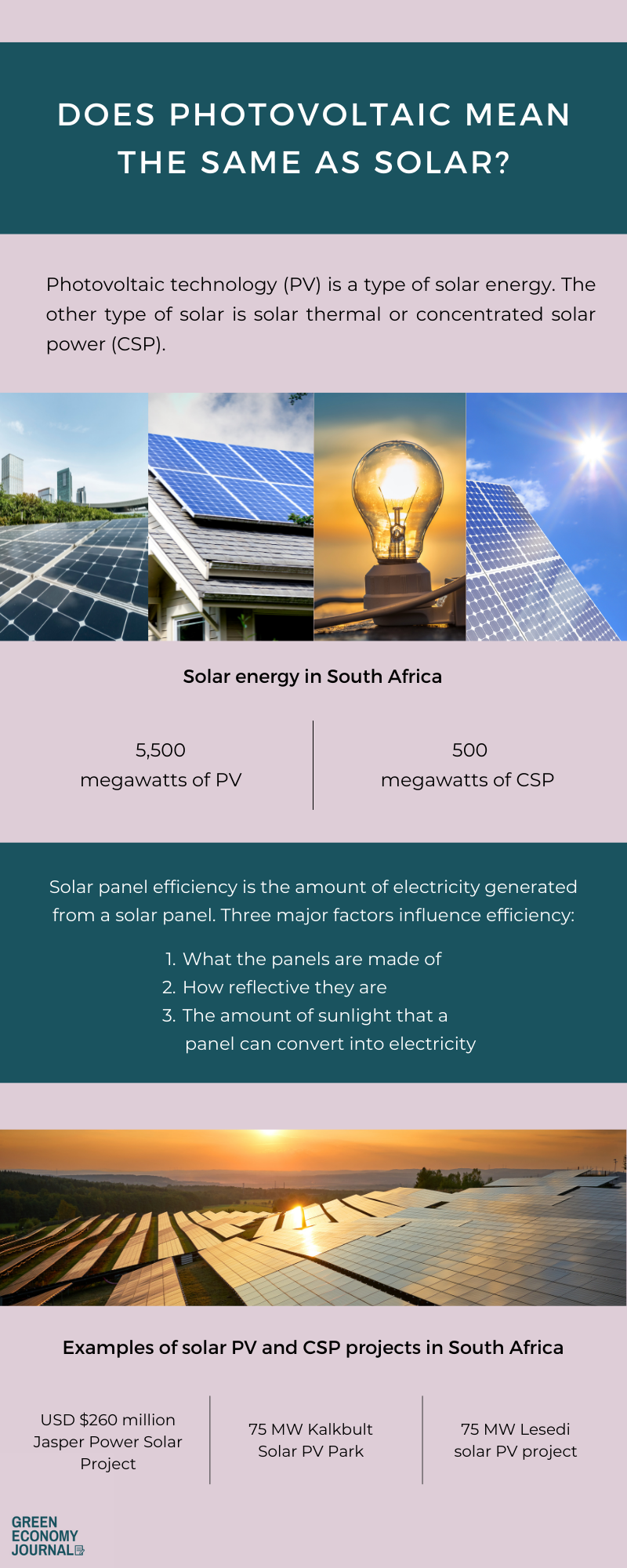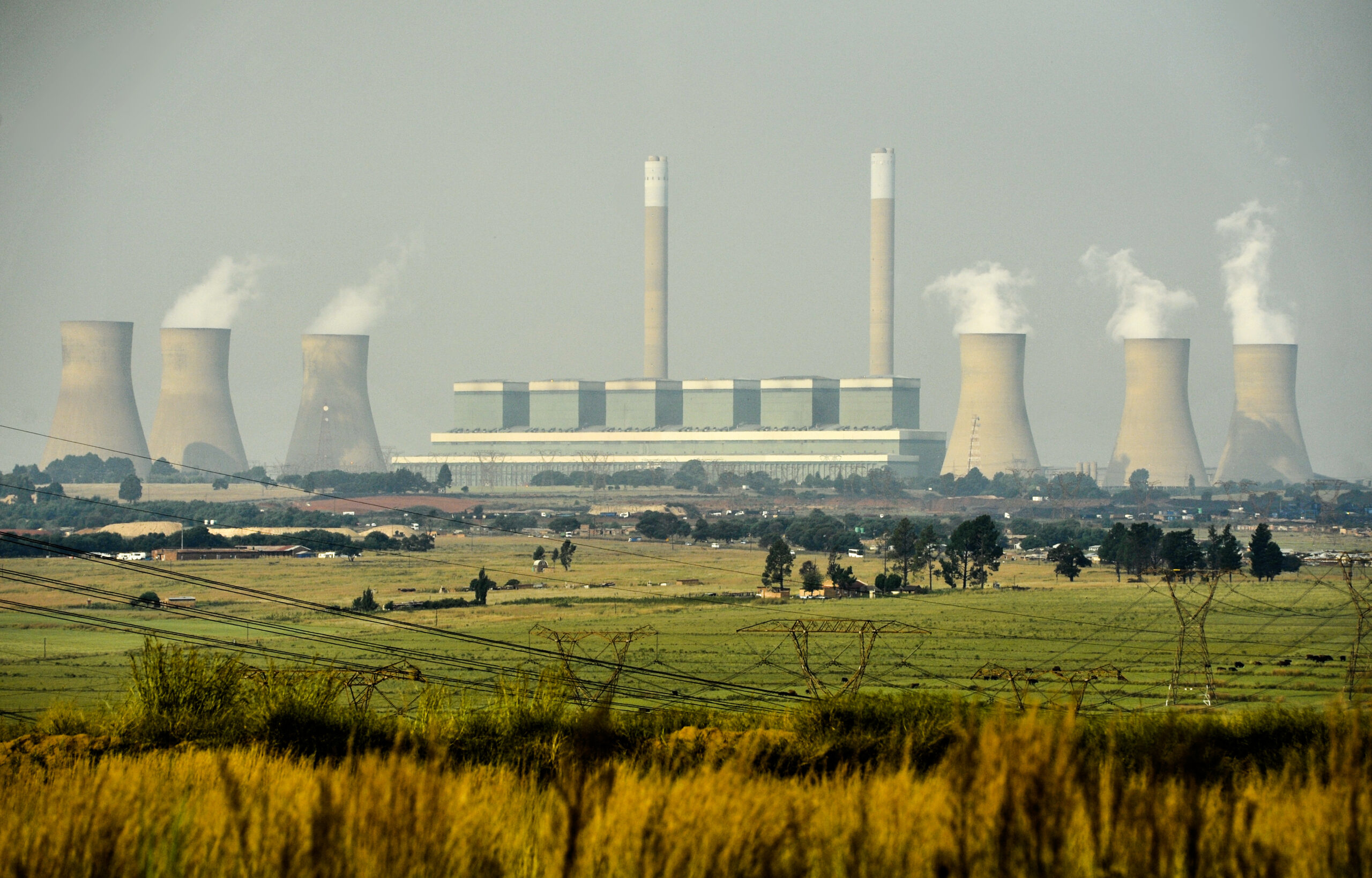Photovoltaic technology in South Africa
Solar power is a clean, renewable source of energy that does not emit greenhouse gases. Photovoltaic technology (PV) is a type of solar energy. The other type of solar energy is solar thermal or concentrated solar power (CSP).
PV devices, or cells, convert sunlight into electrical energy. These small cells, usually only one or two watts, are placed together to form solar panels. These panels are used individually or connected in large numbers to form solar arrays. PV arrays or cells are plugged into the electricity grid.
Globally, the price of solar PV is declining and its popularity is growing. It is estimated that at least 100 gigawatts (GW) of solar PV was adopted globally in 2019. That number is set to increase. This is because solar and wind are the least expensive electricity forms in the world.

The difference between solar cells and photovoltaic cells
Photovoltaic cells are sometimes called solar cells. The terms can be used interchangeably. There are several ways to use PV systems. They can be used to connect users to the grid, or they can be used by users who want to go off-grid, using batteries and other technology.
PV use in South Africa
South Africa’s electricity grid features CSP and PV. In 2020, nearly 5,500 megawatts (MW) of PV were installed in the entire country. There was about 500 MW of CSP installed.
South Africa’s long term electricity plan envisages that by 2030, there will be over 8,000 megawatts (MW) of power from PV and 600 MW from CSP.
The efficiency of solar and PV panels
Solar panel efficiency is the amount of electricity generated from a solar panel. For example, if a solar panel is 20 per cent efficient, it can use 20 per cent of the sunlight it absorbs for electricity generation. Most solar panels are 17 per cent to 19 per cent efficient.
Three major factors influence efficiency:
- What the panels are made of
- How reflective they are
- The amount of sunlight that a panel can convert into electricity
Environmental factors, like shade from nearby buildings or trees, can also affect panel efficiency.
Solar panel efficiency has increased at a rate of about 0.5 per cent each year since 2010. While an efficiency rate of 20 per cent might seem low, it is not when put into context. Most coal plants in the world have efficiency rates of 31 per cent. Most nuclear power plants have efficiency rates of between 33 per cent and 37 per cent.
Solar thermal and CSP
These two plants, solar thermal and CSP, are used for different things. Solar thermal energy is for use in industry, while CSP is used for electricity generation. Depending on the amount of heat it collects, a solar thermal plant can consist of an unglazed plate or mirrors. CSP plants are made of mirrors that reflect the sun’s rays back to a tower. The sun’s energy is used to heat fluid which creates steam, which drives a turbine and creates electricity. It can also be used to heat water. CSP is suitable for large-scale electricity generation, whereas solar PV can also be used for small-scale applications like homes.
Unlike PV, CSP plants can be equipped with molten salts, which allows for electricity generation when there is no sun.

Examples of solar PV and CSP projects in South Africa
Eight of Africa’s ten largest solar plants are in South Africa, and most are in the vast Northern Cape province. This includes the USD $260 million Jasper Power Solar Project and the 75 MW Kalkbult Solar PV Park near Petrusville in the Northern Cape. The latter provides 33,000 households with electricity. The 75 MW Lesedi Solar Power Project, also in the Northern Cape, provides electricity to nearly 65,000 households in the area.

Related Articles
The bad reason South Africa is making good on emissions targets
If current carbon emission trends continue, South Africa might actually be on track to meet its 2030 emissions targets under the Paris Agreement. This is according to research done by the Department of Forestry, Fisheries and the Environment (DFFE). And the reason for this? Mostly load shedding. The data was revealed in the DFFE’s 2023 […]
Eskom: Green energy saves water
Generating electricity from fossil fuels has a hidden cost: South Africa’s already scarce supply of fresh water.




